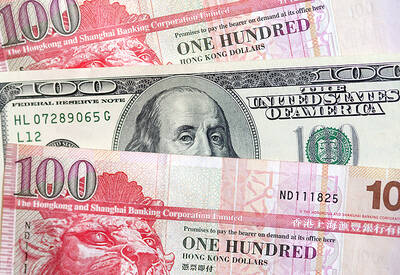Oil futures resumed their march toward US$100 a barrel on Friday, rising to a new record close in light holiday trading on concerns about tight heating oil stocks, while also drawing support from a buoyant equity market.
Light, sweet crude for January delivery rose US$0.89 to settle at US$98.18 a barrel on the New York Mercantile Exchange, besting the previous settlement record by US$0.15, while December heating oil futures rose US$1.68 to settle at US$2.7042 a gallon after earlier setting a new trading record of US$2.7181 a gallon.
In London, January Brent crude rose US$1.26 to settle at US$95.76 a barrel on the ICE Futures exchange.
Nymex crude prices reached a trading record of US$99.29 a barrel on Wednesday, and are within the range of inflation-adjusted highs set in early 1980. Depending on how the adjustment is calculated, US$38 a barrel then would be worth US$96 to US$103 or more today.
Heating oil prices are rising due to falling supplies at home and overseas, analysts said.
"The heating oil market, it's more of a global story," said Andrew Lebow, senior vice president of MF Global Inc in New York. "Because of refinery problems in Europe, [supplies] are kind of tight."
Energy futures also drew support from Friday's rise in the stock market. Energy investors often view stocks as a proxy for the economy's strength, betting that a stronger economy will use more oil and gasoline.
Oil traders shrugged off data suggesting OPEC is increasing production more quickly than expected. Oil Movements, an oil tanker tracking firm based in the UK, reported that OPEC oil exports are likely to jump by an average of 720,000 barrels a day in the four weeks ended Dec. 8, more than the expected 500,000 barrels per day.
Oil prices rose 43 percent between August and early this month on falling domestic inventories, concerns about supply disruptions overseas and, many analysts argue, speculative buying. But recent forecasts have suggested high prices are cutting demand. The inventory picture has become cloudy, too.
Two weeks ago, domestic oil inventories rose unexpectedly. Last week, supplies fell more than expected, but rose at the Nymex delivery point in Cushing, Oklahoma. Falling supplies at the terminal are seen as a symptom of a tight market, but last week's gain in Cushing supplies eased those concerns.
In other Nymex trading on Friday, December gasoline rose US$2.99 to settle at US$2.467 a gallon while December natural gas rose US$0.15 to settle at US$7.70 per 1,000 cubic feet.
Analysts warned that the thin trading volumes on a Thanksgiving holiday-shortened trading day exaggerated the effect of each trade.
"Given the thin trade, any minor bullish headlines will be capable of spiking this market to the upside," said Jim Ritterbusch, president of Ritterbusch & Associates, in Galena, Illinois, in a research note.

The US dollar was trading at NT$29.7 at 10am today on the Taipei Foreign Exchange, as the New Taiwan dollar gained NT$1.364 from the previous close last week. The NT dollar continued to rise today, after surging 3.07 percent on Friday. After opening at NT$30.91, the NT dollar gained more than NT$1 in just 15 minutes, briefly passing the NT$30 mark. Before the US Department of the Treasury's semi-annual currency report came out, expectations that the NT dollar would keep rising were already building. The NT dollar on Friday closed at NT$31.064, up by NT$0.953 — a 3.07 percent single-day gain. Today,

‘SHORT TERM’: The local currency would likely remain strong in the near term, driven by anticipated US trade pressure, capital inflows and expectations of a US Fed rate cut The US dollar is expected to fall below NT$30 in the near term, as traders anticipate increased pressure from Washington for Taiwan to allow the New Taiwan dollar to appreciate, Cathay United Bank (國泰世華銀行) chief economist Lin Chi-chao (林啟超) said. Following a sharp drop in the greenback against the NT dollar on Friday, Lin told the Central News Agency that the local currency is likely to remain strong in the short term, driven in part by market psychology surrounding anticipated US policy pressure. On Friday, the US dollar fell NT$0.953, or 3.07 percent, closing at NT$31.064 — its lowest level since Jan.

Hong Kong authorities ramped up sales of the local dollar as the greenback’s slide threatened the foreign-exchange peg. The Hong Kong Monetary Authority (HKMA) sold a record HK$60.5 billion (US$7.8 billion) of the city’s currency, according to an alert sent on its Bloomberg page yesterday in Asia, after it tested the upper end of its trading band. That added to the HK$56.1 billion of sales versus the greenback since Friday. The rapid intervention signals efforts from the city’s authorities to limit the local currency’s moves within its HK$7.75 to HK$7.85 per US dollar trading band. Heavy sales of the local dollar by

The Financial Supervisory Commission (FSC) yesterday met with some of the nation’s largest insurance companies as a skyrocketing New Taiwan dollar piles pressure on their hundreds of billions of dollars in US bond investments. The commission has asked some life insurance firms, among the biggest Asian holders of US debt, to discuss how the rapidly strengthening NT dollar has impacted their operations, people familiar with the matter said. The meeting took place as the NT dollar jumped as much as 5 percent yesterday, its biggest intraday gain in more than three decades. The local currency surged as exporters rushed to